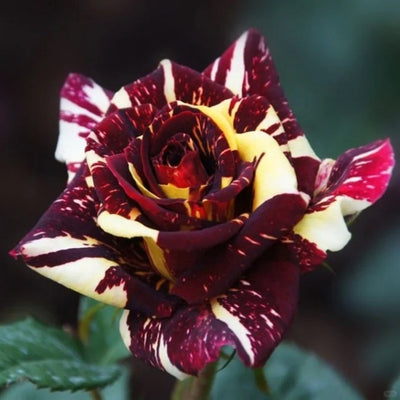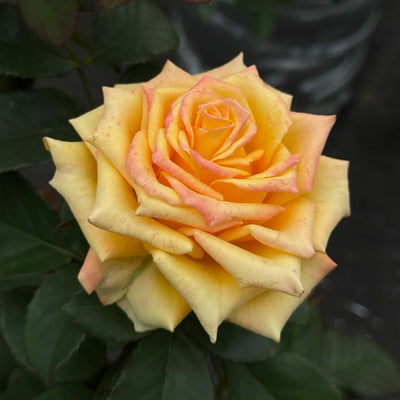A Comprehensive Guide to Growing and Caring for Roses
Roses, known for their timeless beauty and rich symbolism, require proper care to thrive and bloom abundantly. Whether you're a seasoned gardener or a beginner, understanding the essential techniques and precautions for cultivating roses is crucial. Below, we explore the best practices and important tips for growing healthy and vibrant roses.

1. Provide Adequate Sunlight
Roses love sunlight and thrive in well-lit environments. For optimal growth, ensure they receive at least 5 hours of direct sunlight daily.
- Why sunlight matters: Insufficient light can lead to weak stems, excessive elongation (leggy growth), poor flowering, and dull-colored blooms.
- Summer care: While roses enjoy sunlight, they can suffer from intense summer rays. Use light shading or cover to protect them from scorching.
2. Watering Roses Correctly
Proper watering is essential for the growth and vitality of roses. Watering needs vary depending on the growth stage and season.
- During growth: Keep the soil consistently moist to support healthy development.
- Flowering stage: Avoid overwatering or letting the soil dry out completely, as both can cause flowers to drop prematurely. Follow the "not dry, not wet" rule: water only when the soil is dry to touch, and always water deeply.
3. Fertilizing for Optimal Growth
Roses benefit from regular feeding, but the key lies in applying the right type of fertilizer at the appropriate times.
- Spring: Before buds sprout in early March, apply a diluted liquid fertilizer to boost initial growth.
- Summer: After the first blooms fade, apply decomposed organic liquid fertilizer to encourage fresh buds and a vibrant autumn bloom.
- Winter: Before the onset of cold weather, add a small amount of organic fertilizer to the soil to strengthen the plant's resilience against frost.
4. Choosing the Right Soil
Healthy soil is the foundation of thriving roses.
-
Ideal soil properties:
- Rich in organic matter.
- Loose and well-draining to prevent waterlogging.
- pH level: Between 5.6 and 7.2.
-
Recommended soil mix:
- 5 parts garden soil.
- 3 parts decomposed organic compost or trash soil.
- 2 parts rice husk ash (for aeration and lightness).
- A small amount of powdered vegetable cake as fertilizer.
5. Regular Pruning and Maintenance
Pruning is essential for roses to maintain their shape, encourage new growth, and ensure a steady supply of blooms.
- Post-bloom pruning: After flowers fade, remove spent blooms and the branches they grew on. This helps stimulate the growth of new shoots and encourages more flowering.
- Regular care: Keep an eye out for damaged or diseased stems and prune them promptly to maintain the plant’s health.
Additional Tips and Precautions
Pest and Disease Control
Roses are prone to pests such as aphids, spider mites, and fungal infections like black spot and powdery mildew. Regular inspections and timely interventions are crucial:
- Use organic insecticidal sprays or neem oil to keep pests in check.
- Ensure proper air circulation around the plant to reduce the risk of fungal infections.
Seasonal Care
Roses have different requirements based on the time of year:
- Spring and Summer: Focus on growth and flowering by ensuring consistent care with adequate watering, fertilization, and sunlight.
- Autumn: Reduce watering and fertilizer to prepare the plant for dormancy.
- Winter: Protect the plant from frost by adding mulch around the base and pruning lightly.
Deadheading
Regularly removing faded blooms, known as deadheading, redirects the plant's energy from seed production to generating more flowers.
Spacing and Planting
When planting multiple roses, maintain sufficient space between plants to prevent overcrowding. This ensures adequate airflow, reducing the risk of diseases.
Why Grow Roses?
Roses are more than just decorative plants; they offer multiple benefits:
- Aesthetic Appeal: With their vibrant colors and exquisite shapes, roses elevate any garden or landscape.
- Fragrance: Many rose varieties emit a delightful fragrance, adding sensory charm to your surroundings.
- Pollinator-Friendly: Roses attract bees, butterflies, and other pollinators, supporting ecological balance.
Common Mistakes to Avoid
Even with the best intentions, gardeners may encounter pitfalls when growing roses:
- Overwatering: While roses need consistent moisture, soggy soil can lead to root rot. Always check the soil's moisture level before watering.
- Improper Pruning: Avoid heavy pruning during active growth phases. Focus on light trimming and removing only damaged or dead parts.
- Neglecting Fertilization: Roses are heavy feeders; skipping regular feeding can result in stunted growth and poor blooms.
- Ignoring Sunlight Requirements: Without adequate sunlight, roses fail to bloom, and the plant becomes weak.
Recommended Rose Varieties for Beginners
If you're new to rose gardening, consider starting with resilient and easy-to-grow varieties:
- Knock Out Roses: Low-maintenance and resistant to diseases.
- Floribunda Roses: Known for their clusters of blooms and long flowering season.
- Hybrid Tea Roses: Classic long-stemmed roses that bloom repeatedly.
Conclusion
Growing roses is a rewarding experience that combines art and science. With proper care, including adequate sunlight, timely watering, balanced fertilization, and thoughtful pruning, your roses will flourish beautifully. Embrace the challenges, enjoy the process, and watch your garden transform into a vibrant paradise of colorful and fragrant blooms.
So, get your gardening gloves on, and let the magic of roses enrich your garden!
















































